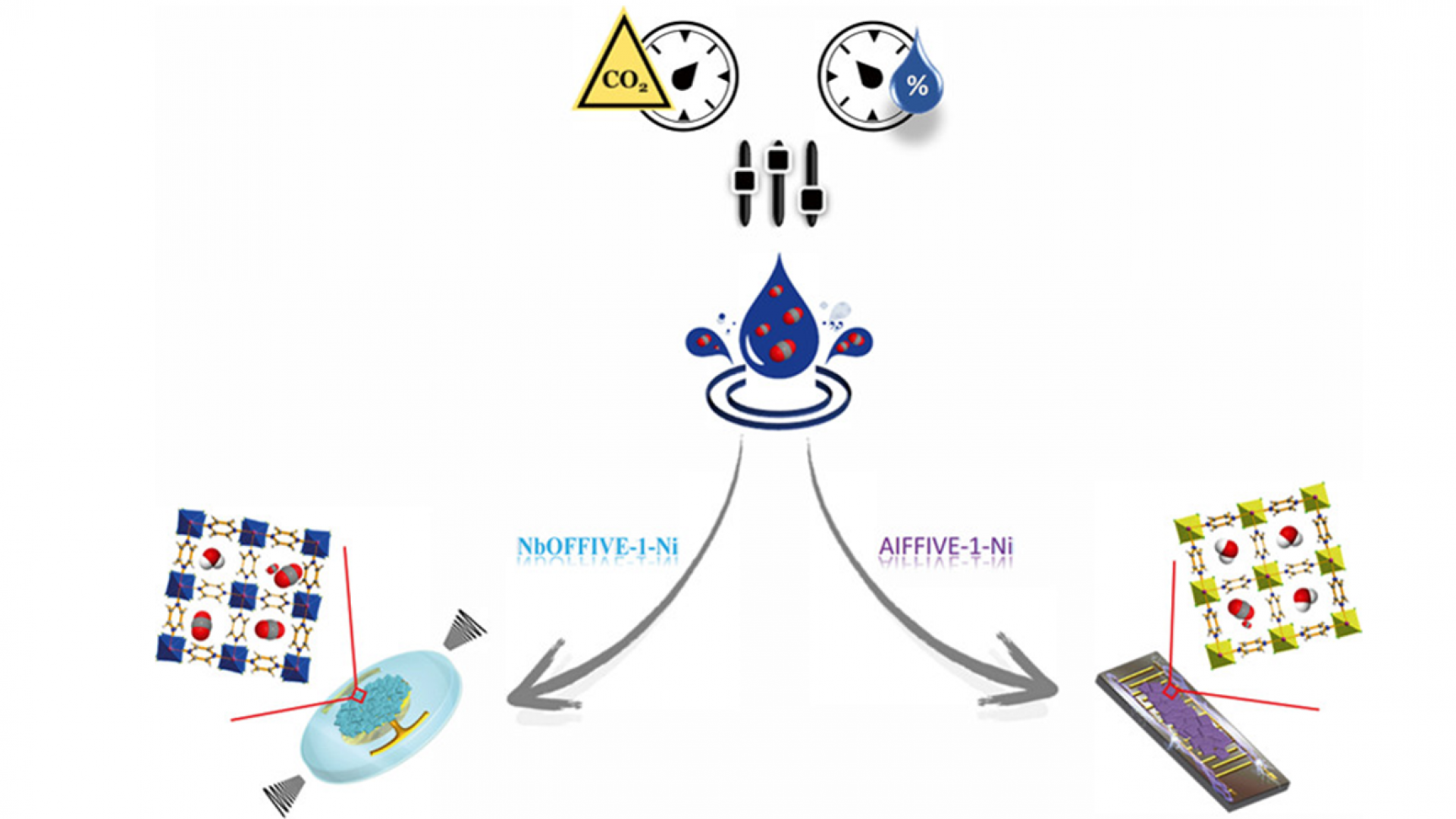Mohamed Rachid Tchalala, et al., "Concurrent Sensing of CO2 and H2O from Air Using Ultramicroporous Fluorinated Metal–Organic Frameworks: Effect of Transduction Mechanism on the Sensing Performance." ACS Applied Materials & Interfaces 11 (1), 2019, 1706.
Abstract: Conventional materials for gas/vapor sensing are limited to a single probe detection ability for specific analytes. However, materials capable of concurrent detection of two different probes in their respective harmful levels and using two types of sensing modes have yet to be explored. In particular, the concurrent detection of uncomfortable humidity levels and CO2 concentration (400–5000 ppm) in confined spaces is of extreme importance in a great variety of fields, such as submarine technology, aerospace, mining, and rescue operations. Herein, we report the deliberate construction and performance assessment of extremely sensitive sensors using an interdigitated electrode (IDE)-based capacitor and a quartz crystal microbalance (QCM) as transducing substrates. The unveiled sensors are able to simultaneously detect CO2 within the 400–5000 ppm range and relative humidity levels below 40 and above 60%, using two fluorinated metal–organic frameworks, namely, NbOFFIVE-1-Ni and AlFFIVE-1-Ni, fabricated as a thin film. Their subtle difference in a structure–adsorption relationship for H2O and CO2 was analyzed to unveil the corresponding structure–sensing property relationships using both QCM- and IDE-based sensing modes.
